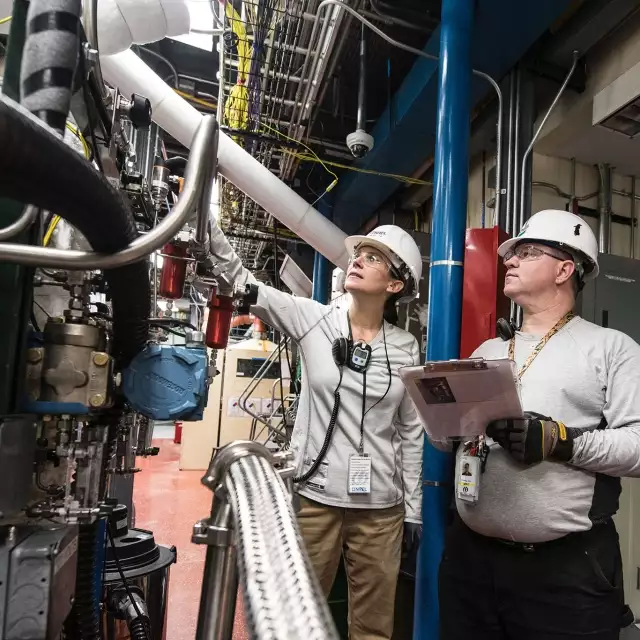
Advice from IDC’s Ryan O’Leary on bringing legal teams into the revenue process

Revenue was once considered the sole domain of the sales team. But modern companies understand that revenue lifecycle management is a cross-functional effort that involves the entire organization. In a recent conversation, Conga’s Chief Marketing Officer Randy Littleson and Ryan O’Leary, Research Director of Privacy and Legal Technology at IDC, explored the role of the legal team in revenue management. Following are some key takeaways from their discussion.
Digital transformation makes legal part of the revenue process
Randy: In many organizations, the legal team is siloed from other functional areas like sales. What do you think is needed to bring legal into the flow so they can better support revenue management?
Ryan responds, “In the past, the legal team wasn’t digitally transformed in the same way as the rest of the organization. But in the past few years, we have seen advancement and adoption of legal technology that has helped convert legal into a team that helps support business outcomes.”
He points to contract lifecycle management as a major contributor to this trend. “Contracts are the lifeblood of an organization,” he says. “They involve every team in sort of an assembly line, and legal is just one part of that process—which gets them involved in collaborating with the rest of the organization and driving the business forward.”
Contract automation makes legal teams more efficient
Randy: What are some of the benefits that organizations get from bringing legal into the revenue process?
“The main benefit is efficiency. In a lot of organizations, the legal team lacks the ability to analyze and improve their processes,” Ryan says. “As they get involved with enterprise collaboration, they get a better understanding of what other departments actually do and how they leverage technology. That increased visibility helps everyone see how their role fits into the bigger picture.”
He continues, “Contract lifecycle management helps to identify the sheer volume of repetitive manual tasks that can be automated, which prevents some things from reaching legal in the first place. This frees up valuable time so the legal team can focus on more substantive work. In our research at IDC, we’ve found that implementing contract lifecycle management to automate those tasks can save the equivalent of nine full-time employees.”
Better processes lead to better metrics
Randy: As legal teams become more integrated into these common processes, what insights can they glean to define better metrics?
Ryan replies, “When you think about how the legal team operates, they essentially have one client—which is the rest of the organization. But that client has a lot of different needs, which results in a lot of different kinds of work coming into the legal department. If you don’t have formal workflows to route that work, analyze processes, and identify patterns, you lose the ability to derive any kind of meaningful insights.”
He shares examples of the insights that can be captured with the right technology:
- Who’s doing what at any given time
- How long each person needs to complete a task
- How the workload is being balanced within the team
- Repetitive questions that could be addressed with an FAQ page
- Organizational knowledge that should be stored in a commonly accessible location
He concludes, “When you leverage software to formalize your processes, you get a much better understanding of what’s going on within the department. You can analyze patterns and become more thoughtful about how work is assigned. You can also be more proactive about mitigating risks, as opposed to reacting when things happen.”
Workload management creates a more proactive legal team
Randy: The unfortunate reality is that many sales reps think of the legal team as a roadblock. What best practices can you share for legal to move from a reactive state to being more proactive in helping to get deals across the finish line?
Ryan answers, “The story there is really about technology implementation. When you implement a contract lifecycle management solution, you can set up playbooks and learn from past contracts using what we call predictive variability. From there you can create guardrails and pre-approved language, so you don’t have to review every single contract. This allows legal teams to focus on contracts for major deals and those with significant pain points.”
He explains that a technology-assisted contract process is like adding “digital coworkers” into the mix, who replace thousands of hours of human contract review. The technology can identify and flag things an overwhelmed legal team might miss.
“This allows the legal team to spend more time looking at the big picture and thinking about what comes next, as opposed to struggling to keep up with contract review,” says Ryan. “The real key to making the legal team more proactive is managing their workload in a way that leaves space for proactivity.”
Automated intake enables better legal service delivery
Randy: In your role, you talk to a lot of people in the legal profession. What are you seeing in terms of best practices that enable better legal service delivery to the organization?
“I recommend creating some type of shared service portal to intake legal service requests from the rest of the organization,” Ryan responds. “This way an end user can log in and submit their request, and the workflow will route it to the right person—or it can send them to an FAQ page if the problem can be resolved without involving the legal team.”
As Ryan explains it, companies pay their legal teams a lot of money, so their time should be focused on work that requires an attorney’s expertise. He concludes, “Technology allows you to synthesize requests into a ticketing system like you would have for IT, and then manage each request in the most efficient way possible. The other benefit is that it allows you to learn from what you’ve done in the past, which increases efficiency even further.”



